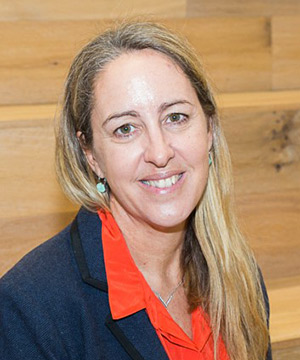Breast cancer survival rates are high worldwide, but ongoing accessible and science-based support for physical activity and healthy eating is needed…
This project has potential to improve survivors’ health outcomes and healthcare satisfaction by improving accessibility of health programs and continuity of care between doctor’s appointments.
Prof Julie Redfern
Background
Breast cancer survival rates are high worldwide (estimated to be 80–90%). After treatment, leading a healthy lifestyle, including a healthy diet and regular exercise, can lower risk of cancer returning.
Unfortunately, health support is not widely available. The few available programs usually happen in-person, which can be expensive and time consuming (eg travel/parking).
It is important that health support is easily accessible to everyone and part of survivors’ ongoing care within and beyond medical appointments (eg family doctor visits). Millions of people own mobile phones. Text messages offer an inexpensive and wide-reaching way to provide health support.
Our team are world leaders in text message research. Our studies, of over 10,000 people with heart disease and diabetes, have found text messages can help people get active and eat healthier.
In our first small study with 160 breast cancer survivors, participants agreed/strongly agreed that a 6-month text message support program called EMPOWER-SMS was useful and motivating for leading a healthier lifestyle.
The program was designed with breast cancer survivors and delivery only cost £11/person but we do not know whether it improves exercise and diet, or can be sent from family doctors.
Aims and objectives
Overall aim is to expand our previous study and improve breast cancer survivors’ exercise, healthy diet habits, quality of life and reduce risk of cancer returning.
This scientific research project will test whether sending the automated text message program to breast cancer survivors via the family doctors is useful and effective in improving health.
How it will be done
We will run a clinical trial with 1,454 patients. Half (727 people) will receive text messages for 6 months (for free) and half will continue without any messages.
We will use computer software already installed on over 80% of Australian family doctors’ computers to select breast cancer survivors and automatically send a registration weblink via text message. Patients simply click the weblink and complete an online form to register (eg name, mobile number) and surveys about their health (exercise, diet, quality of life). The messages are positive, include helpful tips and links to exercises, recipes, and wellbeing support.
After 6 months, survivors will wear a wristband to calculate activity levels and repeat surveys about health, wellbeing and usefulness.
The entire study is conducted via text messages or remotely, making it accessible and less time-consuming than in-person programs.
Potential impact
This research has potential to improve exercise, diet, and quality of life among breast cancer survivors, in turn reducing risks of cancer returning. This is impactful given the texting program can be fully automated into family doctors’ computer systems so all eligible patients are offered advice and support between appointments, overcoming barriers of time and travel.
If it works, the program will be rolled out Australia-wide. Ultimately, this project will help breast cancer survivors live their best lives. In the words of a previous recipient: “it had a long-term impact on the way I think about things I can do to make sure cancer doesn’t come back” (Female, 37 years).
Grant publication
Singleton AC, Partridge SR, Hyun KK, Mitchell C, Raeside R, Hafiz N, Nickel B, Mizrahi D, Todd AR, McIntosh J, Chan RJ, Stuart KE, Ee C, Elder E, Redfern J. Text message intervention delivered from Australian general practices to improve breast cancer survivors’ physical activity and cardiovascular risk factors: protocol for the EMPOWER-SMS-GP effectiveness implementation randomised controlled trial. BMJ Open. 2024 Dec 11;14(12):e090984. doi: 10.1136/bmjopen-2024-090984. PMID: 39663171; PMCID: PMC11647304.
